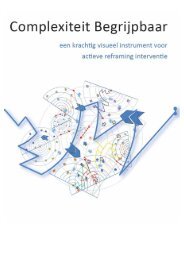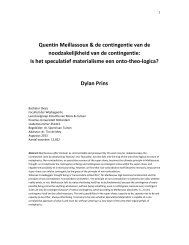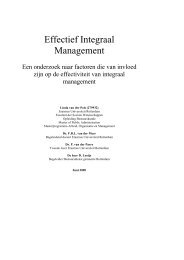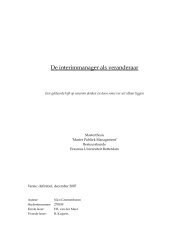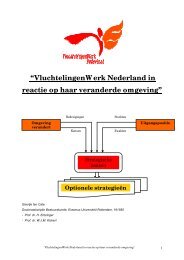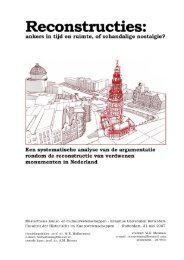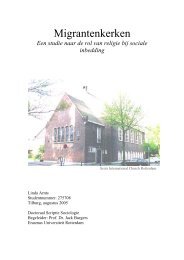finalVersion - Erasmus University Thesis Repository - Erasmus ...
finalVersion - Erasmus University Thesis Repository - Erasmus ...
finalVersion - Erasmus University Thesis Repository - Erasmus ...
You also want an ePaper? Increase the reach of your titles
YUMPU automatically turns print PDFs into web optimized ePapers that Google loves.
Hoofdstuk 10: Samenvattingen en bijlagen<br />
10.1 Summary in English<br />
Jazz over the Ocean is a Master’s <strong>Thesis</strong> that discusses the jazz music in Rotterdam, 1918-1940. The<br />
port function and cultural climate of Rotterdam are probably the factors that best explain the<br />
flourishing jazz tradition; this Dutch city aimed at modernity and was thus in direct contact with the<br />
United States and with other European cities. What did this mean for the network of musicians? How<br />
did this influence the jazz history? In what way and to what extent was the Holland-America Line<br />
important for the distribution and development of jazz music in Rotterdam during the Interbellum?<br />
This Master’s <strong>Thesis</strong> concerns the jazz history, maritime historical context and the history of<br />
the pre-war cultural life of Rotterdam. The historiographical examination (in chapter two) shows how<br />
these three main fields of research have thus far never been really connected to explain the historical<br />
and socio-cultural network of early jazz musicians, from the perspective of the more technical and<br />
maritime story of port cities, such as Rotterdam.<br />
Chapter three concerns the stage and performance infrastructure in the Dutch Interbellum:<br />
who played where, with whom? Musical families took the initiative in bars and American soloists<br />
often played together with the orchestras of Rotterdam. The new American dances were hot.<br />
Fourth chapter demonstrates that the overseas contacts for Holland were in the first instance<br />
its colonies: from Suriname came negro musicians, who could easily find employment as American<br />
entertainers; in the Dutch Indies the native peoples started playing new instruments. The line via<br />
Batavia seemed to be ‘shorter’ than the transatlantic. Integrating new customs and working with<br />
people with other skin colors invited resistance, all the more since jazz dances were seen as barbaric.<br />
Chapter five points out the technical developments in the pre-war period, in relation to<br />
shipping and modern life: radio and gramophone records were indispensable for the rise of the new<br />
swinging dances.<br />
The sixth chapter discusses live music on board. Some musicians have their saying about the<br />
actual music, hereby they have put the share of jazz history on cruise ships in perspective. Above all,<br />
amusement was seen as more important than the music providing that entertainment.<br />
The seventh chapter is mainly concerned with presenting the conclusions of this research and<br />
recommendations for further research. Regarding the Holland-America Line: the image of the<br />
transatlantic connection has contributed to the importance of the Line, more than the actual maritime<br />
activities. Rotterdam’s impulse to Americanize, together with the established network and image,<br />
constructed the ‘jazziness’ of the city.<br />
Further research into port cities as cultural hotspots is still only a dream. To learn more,<br />
please contact the author: jazz@arieverheij.nl.<br />
109



